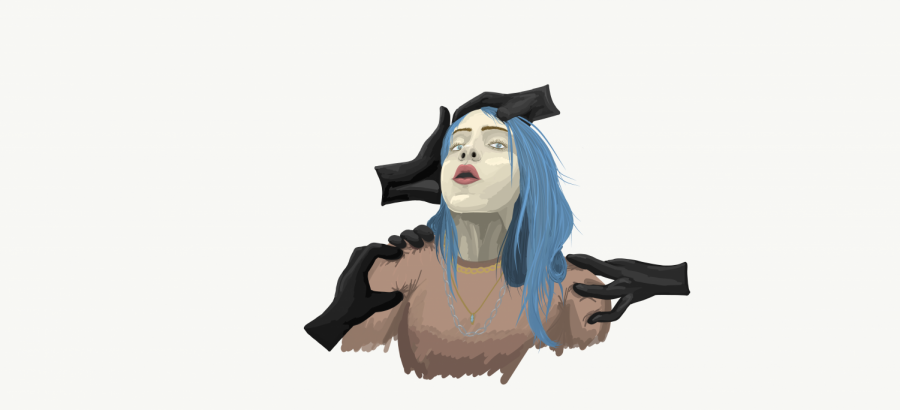Pop-Cultured: A Dark Obsession
November 9, 2019
In the darkness of the morning, I roll over and begin scrolling through my phone. As I get ready, the latest Billie Eilish album runs on repeat. I sing along to “Bad Guy” and walk to Trax listening to “Bury a Friend.” At school, my friends and I discuss the newest comic book adaptation, the dark psychological thriller “Joker.” After dinner, I fall asleep binging “Living with Yourself,” a series that begins with a man buried alive and only becomes crazier as this same man creates a clone of himself. Many of my days end up centered around dark and disenchanting content. Why? For me, it’s because dark media and content bring forth real issues and stories without the romanticizing that lighter stories do.
Many forms of media are currently trending towards darker themes. Oftentimes, it comes from an attempt to discuss real ideas and honest subjects — no matter how uncomfortable or gritty they may be — without fake frills added on top. The darkness becomes a theme, and the content is made more extreme and more disturbing to intensify that shock factor. It’s becoming rather difficult to find a current show, movie or song with no exaggeration of dysmorphia or grotesqueness in its characters and stories. These morally complicated plotlines often receive rave reviews and five-star audience approval ratings. What isn’t reviewed is how they can leave the viewer feeling disturbed and gloomy for some time after.
Recent music sensation Billie Eilish is one of the best examples of media that takes on dark subjects. “Blood on a marble wall/I like the way they all/Scream/Tell me which one is worse/Living or dying first” are just some of the lyrics from her single “You Should See Me In a Crown.” No matter how dark the song gets, it’s extremely popular, and Eilish’s album is a number-one hit. I don’t agree at all with its intense message, but I try to ignore the lyrics in order to appreciate the solid beat and captivating sounds.
For shows and movies, I find I usually need to choose between two extreme options — cute and animated movies like “Frozen,“ or horror films like “Hereditary.” Neither are entirely realistic to life, but it feels like they are all that is available. If I want to see a movie, nine times out of ten I end up choosing something with harsh subject matters like gratutious sexuality, violence or extreme language because the alternatives feel naïve and frilly. These intense themes make the story more intriguing and disturbing at the same time. My mind computes and understands all this disturbing content, but I will ignore the uneasy twist in my stomach and tell myself that the darkness doesn’t affect me.
The question becomes this — why are so many of us choosing the darkness? In this current world, I believe we are pushing towards a beautiful future of openness and honesty. However, it seems as though instead of finding a happy medium between dark and frilly, we are heading full-on into disenchantment and the disturbing without looking back at some of the light and joy available. We are fooling ourselves that truth is as easy as the opposite of light. The media seems to be pushing to make us swallow more than we often want or even need to chew.
When watching “The Act” or “Bates Motel,” no matter how hard it may be to view some of what occurs, I will endure it and grasp on to the littlest bit of humor or good storyline. This is all in an effort to say I can and will watch something graphic. If everyone seems to be watching it, then it must be good, right? There have been articles and lawsuits blaming dark shows like these for depression and mental health illnesses, and I don’t think those claims are far from the truth. We will never un-see these films and television shows, and we can’t simply forget about the twisted material. We can, however, look for moments of happiness and beauty instead. Why spend the bit of free time you do have on darkness? Why not find an extra bit of joy and laughter?








